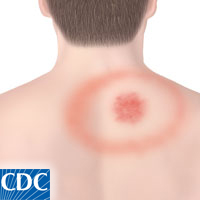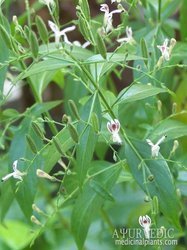Living in northeastern United States, summertime means warmer weather, less clothing and more time spent outdoors. Unfortunately, all the time spent walking, hiking and biking in the woodsy areas coincides with an increased presence of ticks. As a result, the months of June and July see the largest numbers of confirmed cases of Lyme disease by far, according to the Centers for Disease Control and Prevention (CDC). The disease is caused by bacterium Borrelia burgdorferi, which is spread through bites of infected blacklegged ticks, AKA deer ticks—and on the Pacific Coast, by western blacklegged ticks.
Who Is At Risk for Lyme Disease
The CDC reports that 95 percent of Lyme disease cases from 2012 were reported in just 13 states: Connecticut, Massachusetts, Maine, New Hampshire, Vermont, New York, New Jersey, Delaware, Pennsylvania, Virginia, Minnesota and Wisconsin. Pennsylvania reported the largest number of cases in 2012 with 4,146 people confirmed to have the disease, plus 887 probable cases. In my home state of Connecticut, there were 2,108 confirmed cases of Lyme disease in 2013, with an additional 810 probable cases, according to the CT Department of Public Health. The prevalence of Lyme disease in these areas is likely due to the large populations of white-footed mice and deer, the deer tick’s preferred hosts, physically close to humans. According to board-certified and registered herbalist Lisl Meredith Huebner, of Hartford County, several studies suggest invasive plants like Japanese Barberry and Japanese Knotweed also provide a sheltered habitat for mice, and other rodents who help spread the disease. “It may help to remove these plants and limit the habitat of the rodents,” she says. “When overpopulated deer are kept out of certain areas, indigenous plants begin to thrive and crowd out the invasive ones.”
Symptoms of Lyme Disease
Early symptoms of Lyme disease include:
• Red, expanding rash
• Fatigue, chills, fever, headache, muscle and joint pains
• swollen lymph nodes
The “bulls-eye” rash, or erythema migrans may also occur. Its absence is not a guarantee that one has not contracted the disease. Symptoms may develop soon after a bite or take weeks to manifest, so it is crucial to pay close attention to the body for any new symptoms that may arise.
As the bacterium spreads, symptoms may include:
• Ball’s Palsy, or loss of muscle tone in the face
• The severe headache and neck stiffness of meningitis, inflammation of the spinal cord
• Pain and swelling in large joints, like the knees
• Heart abnormalities
Left untreated, Lyme disease can lead to arthritis, as well as numbness in arms, hands, legs and feet. With Central Nervous System (CNS) involvement, neurological disorders may lead to disorientation, brain fog and short-term memory loss.
Diagnosing and Treating Lyme Disease
“A tick bite may become inflamed and irritated simply because it’s a bite, not because it’s carrying a pathogen, so use a ball-point pen to draw a circle around the reddened area and watch it carefully over the next few days,” advises Huebner. “If a bulls-eye rash appears, get to the doctor right away for a Lyme and co-infection blood test. The best tests available today are the Reverse Western Blot and the Phillips-Mattman, while the standard tests, the Elisa and Western Blot are often criticized for being fallible.”
Boost Your Immune System with Nutrition
While waiting for test results, Huebner suggests boosting the body’s immune system with dietary changes. “Clean up your diet right away and avoid ALL processed foods, alcohol, sugar and refined grains,” she says. “Start building your immune system with extra herbs and mushrooms, and if you have a strong constitution and no digestive issues, you may want to consider a little of the herb Andrographis, which has been shown to exhibit anti-bacterial properties. Some people have sensitivity to this herb though, so it’s really best to go with the experienced guidance of a trained herbal practitioner.”
Health care practitioners usually suggest treatment with antibiotics after a deer tick bite. “Pharmaceuticals may be undesirable to some people, but it’s far more preferable to deal with the problems associated with antibiotics than it is to deal with acute Lyme disease, its co-infections or Post-Lyme Syndrome,” she says.
Treating Lyme Disease With Essential Oils
A colleague with Lyme disease recommends taking frankincense internally for the symptoms of Lyme or topically applying it to specific areas. Ylang Ylang may calm the irritated nervous system and help ease heart palpitations. ”If migraines are an issue, a little Frankincense on the roof of the mouth can have amazing results,” she says. Peppermint and lavender may also be helpful in relieving itching and pain. Read more about treating the disease with essential oils here.
Naturally Lower the Risk for Lyme
Minimizing the risk of being bitten by an infected tick is the best way to lower the chance of being infected by Lyme. When traveling outdoors, wear light-colored clothes, a hat, long sleeves, closed shoes, and long pants that are tucked into socks. To avoid the toxic exposure to chemical insect repellants, natural homemade bug repellants are a great alternative.
“The essential oil of Lemon Eucalyptus has a great reputation for deterring ticks, and Pennyroyal, Rosemary, Peppermint, Lemongrass, Geranium and Citronella are also rather popular,” says Huebner. She makes a blend of pure plant essential oils that she sprays on clothing, especially the cuffs of pants, before heading outdoors. Find other homemade bug repellent oil recipes on Primally Inspired.
While outdoors, avoid large areas of bush, tall grass and leaf collections, as well as use caution in the woods—walk in the center of walking/hiking trails. Upon returning indoors, check clothing and the entire body for ticks—use mirrors if necessary, and don’t forget to check the hair and scalp, especially for those with thick and/or long locks. I’ve found ticks in the shoulder and inner thigh myself.
Once Bitten…
Even with all these precautions, tick bites are still possible. If a tick has penetrated the skin, take fine tweezers and grasp as close to the base of where they are attached—squeezing higher up on a tick’s body may cause more infected body fluids to enter the person. Make sure to grab the head of the tick when removing it. Some recommend putting the antiseptic tea tree oil on the tick before removing it with tweezers. For more details on how to remove a tick, visit this article on Runner’s World.
Save the tick to bring to a doctor to have it tested for Lyme disease. The doctor may order blood testing to be done a month later. While awaiting blood test results, some may choose to go on antibiotics immediately as a precaution, especially as false negatives are not uncommon. A tick usually needs to be attached to the body for 36-48 hours or more before it can transmit the disease, though there are rare exceptions.
“If bitten, it would be wise to apply certain high-grade essential oils to the site frequently; a few helpful ones are Laurel Leaf (Bay), Marjoram, Thyme and Mugwort,” says Huebner. “I have also used a technique called “cupping” to bring fresh blood to the site to pull out toxins. Clay plasters can also help pull out toxins, and fresh herb poultices such as violet, plantain and/or yellow dock leaf can help to soothe a bite that’s become irritated.”
Fortify Your Immune System With Quality Food and Herbs
To fight off future potential infections, she also recommends fortifying the body in advance with foods that are rich in healthy fats and a rainbow of vegetables (especially dark leafy greens), as well as occasionally consuming a variety of whole grains, organic fruits, berries, nuts and seeds, in addition to introducing plenty of herbs and spices.
“I must mention the generous health benefits of consuming naturally fermented foods. Making your own sauerkraut, kimchi, or other lacto-fermented vegetables offers a range of probiotics often not found in packaged items or commercially available supplements,” she informs. “A population of beneficial bacteria is like having your own personal defensive army when invading pathogens try to make a host of your body.”
Huebner suggests taking herbal remedies to enhance the immune system.
“Some herbs will complement your personal constitution better than others, so it’s wise to consult an experienced herbalist, or do your research,” she says. “A few may be Eleuthero, American ginseng, Ashwaganda, and Astragalus. Medicinal mushrooms such as reishi, maitake, turkey tail, lion’s mane, shiitake and porcini are extremely popular as well for boosting the immune system.”
As a healthcare practitioner for 20 years, Huebner says, “I’m going to go out on a limb by saying that prevention IS the best medicine.”
“HerbaLisl” Lisl Meredith Huebner, Dipl.CH (NCCAOM), RH (AHG) is a nationally board certified Chinese Herbalist, and a Registered Herbalist with the American Herbalists Guild. Lisl is also a certified Medicinal Aromatherapist, a Reiki Master an Acupressurist, an Auriculotherapist, a photographer, a renowned diagnostician, a teacher and a published writer who has enjoyed a successful private practice for nearly twenty years. www.HerbaLisl.com





Exceelent article, I would like to reblog on my blog if you would like, let me know! Cathy T
May I reblog this on my blog as your article? Great work – you are such an excellent writer with amazing timing!! Cath
Cath, I would love it if you share this. Thanks so much!! -Renée
Reblogged this on Container Crazy Cathy T and commented:
A few weeks ago, I was working in my garden, and when back in the house, I saw a tick crawling up my shirt. Fortunately, I had a white shirt on – a color often recommended to wear outdoors, including for your socks, so you spot ticks easily should they creep up on you. This article by a local Broad Brook CT Blogger gives very helpful advice on how to deal with bites including some photos of tick bite signs. Thus, with Renee’s permission, I am reblogging her post here for my CT readers. Cathy T
Immune system is very important.